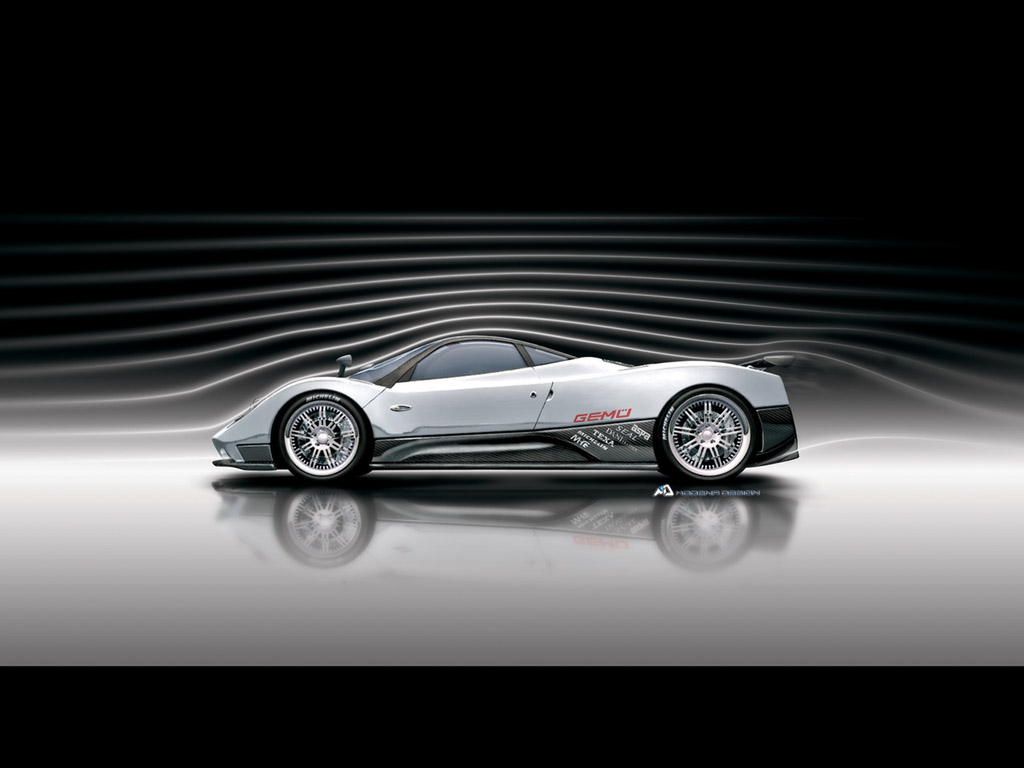 The aerodynamics of a high
performance sports car like, the Veyron, are aimed at reducing drag and
increasing downforce. The aerodynamics of a high
performance sports car like, the Veyron, are aimed at reducing drag and
increasing downforce.
Drag is defined as 1/2 x the air density x velocity squared x surface
area x the drag coefficient. Less drag will reduce the force acting
againsed foreward velocty allowing for a greater acceleration and top
speed. Extra downforce ensures that the torque provided by the engine
is applied firmly to the ground through friction with the tires.
The Veyron engineers were aware of these principals not only in the
design, but in the record setting. The speed record was taken mid-day,
when the air is least resistive.
|
|

Pagany Zonda: high front and rear downforce, high underbody air
velocity, low drag.
|
The Veyron SS uses
the same overall design of the original Veyron while modifying the body
in numerous places for improved aerodynamics. It includes a low drag
body, low drag rear spoiler for high rear downforce, and wings in the
foreward diffuser to increase front downforce. The engine bay in the SS
edition is covered for the most part which reduces air turbulance
across the midsection of the body. the front and rear diffuser system
underneath the Veyron reduces drag and increases air velocity beneath
the body which decreases pressure resulting in an increase in downforce.
|
|
 The aerodynamics of a high
performance sports car like, the Veyron, are aimed at reducing drag and
increasing downforce.
The aerodynamics of a high
performance sports car like, the Veyron, are aimed at reducing drag and
increasing downforce.